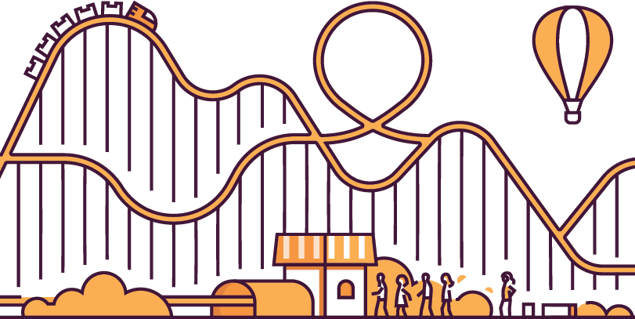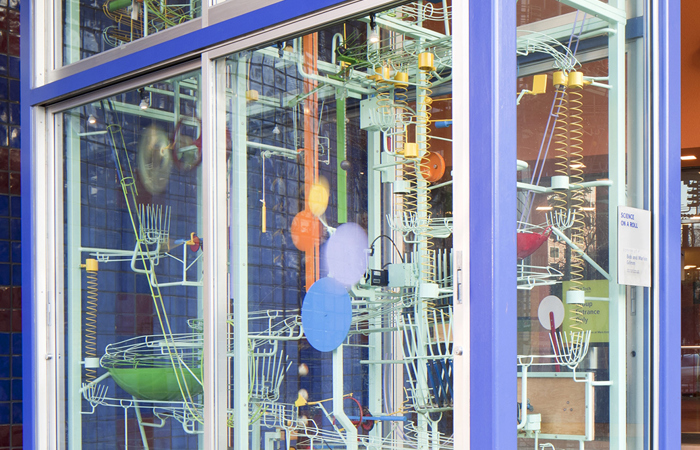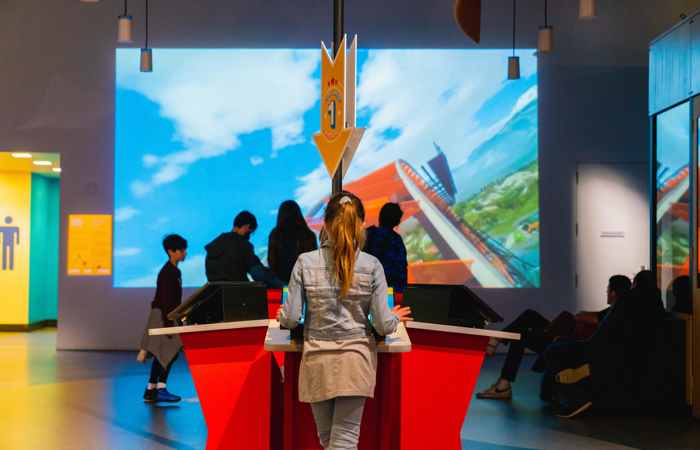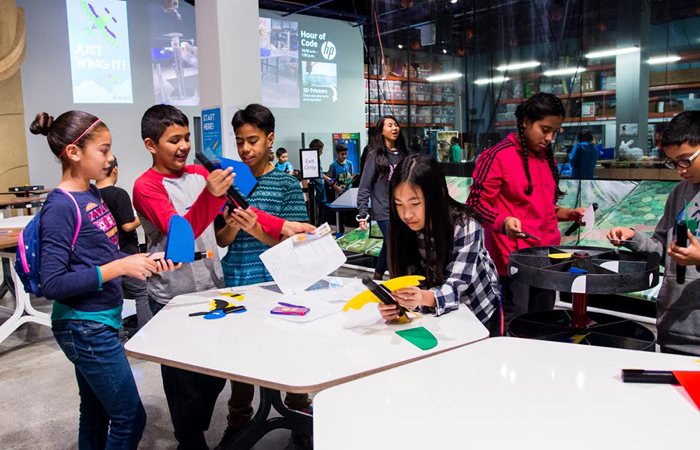Advanced Physics of Roller Coasters Lab

| Grades: 9-12 |
| Duration: 90 minutes |
|
Available Times: 9:30 a.m. and 12:30 p.m. on school field trip operating days *Start and end times may be flexible. Please speak to the Group Reservations specialist when booking. |
| Concepts/Skills: Gravity, Potential Energy, Kinetic Energy, Velocity, Engineering Design |
Calculate the thrills and excitement of your own roller coaster prototypes! Students build their prototypes, then determine the kinetic and potential energy of their designs.
Lab Guide
Design a robust learning experience by selecting resources from this guide that fit the needs of your students. Reinforce learning before, after and even during your visit by diving deeper into some of the science and engineering concepts.
Lab-Related Activities
![]() Lessons marked with an orange gear icon address engineering within the Next Generation Science Standards.
Lessons marked with an orange gear icon address engineering within the Next Generation Science Standards.

Circle of Pong
Grades 2-12
Lesson: 65 minutes

Exploring Chain Reactions
Grades 2-12
Explore stored energy, energy transfer, and simple machines while building a series of chain reactions. ![]()
Activity: 30 minutes
Lesson: Two 60-minute sessions

Vocabulary Choice Board
Grades K-12
Vocabulary activities to pair with one of our labs or other STEM activities.
Lesson: 20-30 min
Advanced Physics of Roller Coasters Lab
Exhibit Connections
Make connections between learning from the lab and the exhibits and programs found in The Tech Interactive’s galleries. For more exhibit connections, see the Lab Guide above.
Standards Connections
| Next Generation Science Standards | |||||
| Grades | Engineering Design |
Physical Science | Disciplinary Core Ideas | Crosscutting Concepts | Science and Engineering Practices |
| 9-12 | HS-ETS1-2 HS-ETS1-3 | HS-PS2-1 HS-PS3-3 |
PS3.B ETS1.A ETS1.B ETS1.C |
Energy and Matter Systems and System Models Structure and Function |
1, 2, 3, 4, 5, 6 |
 Skip Navigation
Skip Navigation



